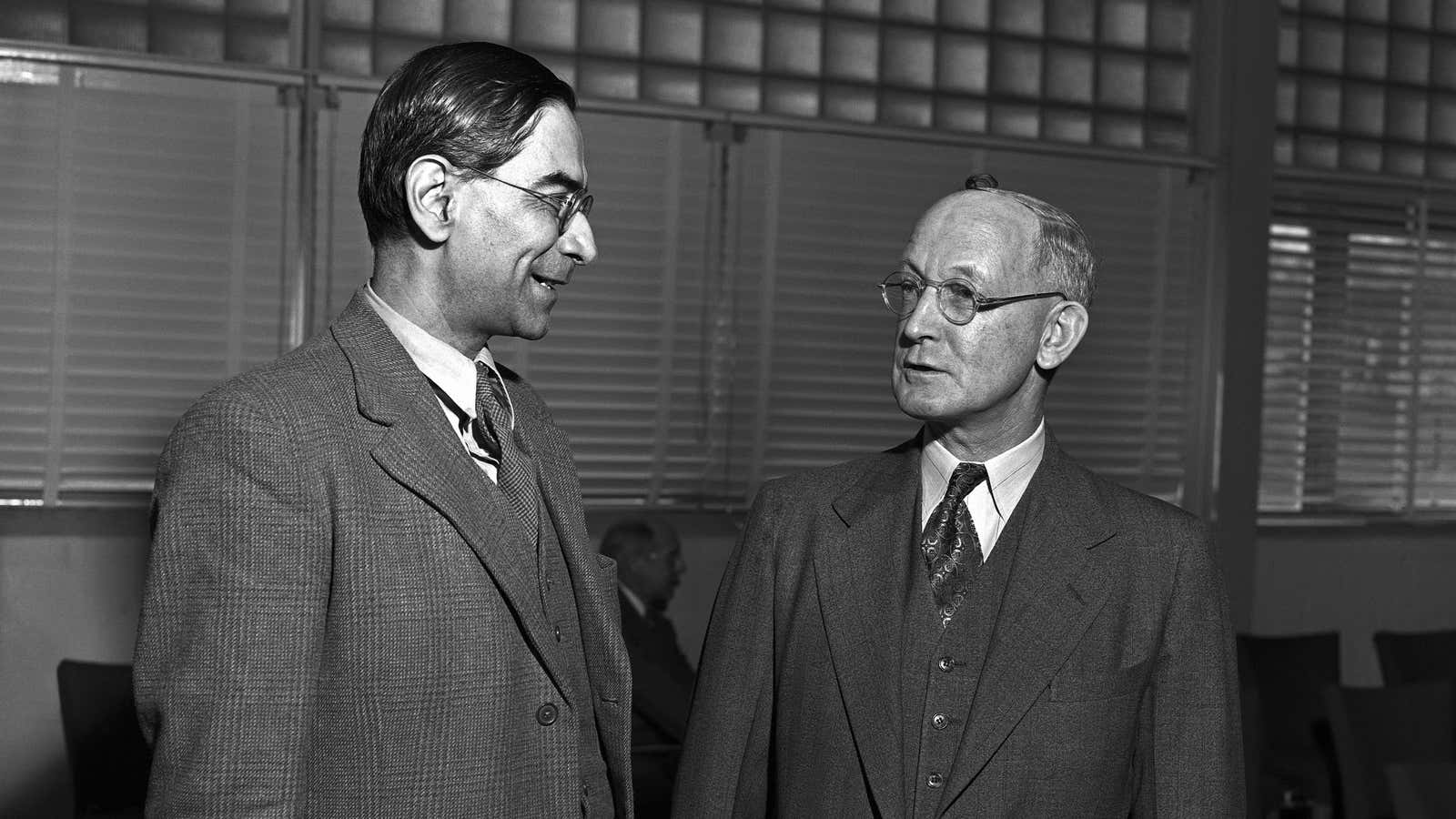The making of modern India owes a lot to a physicist-turned-statistician who pioneered the art of conducting large-scale surveys to better understand a newly independent nation.
Today (June 29), Google Doodle celebrates the 125th birthday of Prasanta Chandra Mahalanobis, a legendary mathematician who is widely considered the father of statistics in India. The founder of the Indian Statistical Institute (ISI), Mahalanobis encouraged the adoption of statistics in economic research and planning at a time when the field was virtually non-existent in India.
Mahalanobis was born on June 29, 1893, into a well-off family in Calcutta (now Kolkata) that reportedly traced the roots of its name to a Mughal-era ancestor who kept land revenue records in ancient Bengal. At the time, he was known as “Nauvice,” a Persian word meaning scribe of the Mahal (the Mughal court). The last name Mahalanobis evolved from the combination of “Nauvice” and “Mahal.”
The young Mahalanobis began his education at the Brahmo Boys School established by his grandfather in 1904, before going on to get a bachelor’s degree in science from Presidency College in 1912. He then sailed to England and joined Cambridge University in 1913, where he aced his exams in physics and was awarded a research scholarship of £80 a year.
He wasn’t solely focused on physics, though: In his time at Cambridge, he also read about astronomy, philosophy, architecture, and psychology. But one day at the library, he was introduced to the theoretical statistics journal Biometrika, which laid the foundation for his life-long fascination with statistics.
In 1915, a year after the First World War broke out, Mahalanobis came back to India for a break, but the intensifying conflict prevented him from returning to Cambridge. So, he embarked on a career as a lecturer at the Presidency College in Calcutta and became an assistant professor of physics in 1922. He would go on to teach physics at the college for the next 33 years.
Like at Cambridge, physics was hardly his only priority. He established a statistical laboratory at the college, where he conducted research into the issues of flood control in north Bengal and Orissa (now Odisha), among other things. And on Dec. 17, 1931, he established the ISI, a statistical society that would go on to draw some of the greatest mathematicians of that time, who engaged in pioneering research. Mahalanobis himself made advancements in descriptive statistics, coining the “Mahalanobis distance,” a measure used to account for correlation between variables.
Though it initially struggled with finding enough funding, in the 1930s, the ISI managed to embark on pioneering pilot surveys that measured aspects of the Indian economy that had never been comprehensively recorded before. The institute used sampling to study things like tea consumption patterns and crop acreage.
After India’s independence from British rule, the ISI’s research became even more essential as the first government scrambled to find ways to promote industrialisation and development, and reduce poverty in the wake of the brutal effects of Partition. At the time, unlike in more developed countries, there was hardly any accurate data that the Indian government could use for its planning, so Mahalanobis and the ISI worked to create a large-scale sampling project to figure out the size and the state of the economy.
In 1950, he helped establish the National Sample Survey Organisation (NSSO), which over the years would fine-tune ways to capture the state of India’s vast territory by collecting accurate socio-economic data every year. He also helped set up the Central Statistical Organisation to coordinate statistical research in the country.
It was Mahalanobis’s work for the government of India that would really establish his legacy, which the American statistician WA Deming summed up with the following: “No country, developed, underdeveloped or overdeveloped, has such a wealth of information about its people as India has in respect of expenditures, savings, and time lost to sickness, employment, unemployment, agriculture and industrial production.”
The NSSO’s work was so pioneering and influential that researchers and policymakers from outside India reportedly made trips to the country to learn from Mahalanobis and his staff. Mahalanobis was at the forefront of statistical research in India and even spurred the introduction of the country’s first computers, which were used at the ISI to help out other government agencies, including the ministry of defence and the India Meteorological Department.
Throughout his illustrious career, Mahalanobis won several awards, including the Padma Vibhushan, India’s second-highest civilian award. In June 1972, he died at the age of 79, after a lifetime of pioneering work that showed the world just how far statistics could go.
